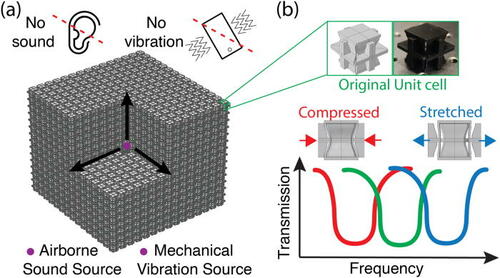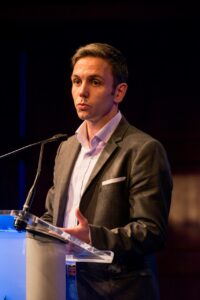A new paper published in Applied Physics Letters co-authored by Prof. Osama Bilal and his PhD student introduces materials that can simultaneously block sound and vibrations at tunable frequencies by design.

A new paper published in Applied Physics Letters co-authored by Prof. Osama Bilal and his PhD student introduces materials that can simultaneously block sound and vibrations at tunable frequencies by design.


Our own UConn Formula SAE team placed 10th overall and in the top ten of multiple different categories in the international Formula SAE competition held at the Michigan International Speedway in May 2022.
 Abstract: Soft robotics aims to develop technological tools to allow people to interact more closely with machines, in a range of settings, from manufacturing, to healthcare, and even our homes. Dielectric elastomer actuators (DEAs) are compliant capacitors which can directly convert an electrical input into mechanical work. DEAs hold the promise of muscle-like behavior, as soft devices that are electrically driven, and easy to integrate with other robotic components. This talk will discuss how muscle-like behavior can be achieved, using knowledge from materials science, electrical engineering, mechanical design, and micro manufacturing. With high performance DEAs, tactile communication tools are demonstrated, with potential medical devices soon to follow.
Abstract: Soft robotics aims to develop technological tools to allow people to interact more closely with machines, in a range of settings, from manufacturing, to healthcare, and even our homes. Dielectric elastomer actuators (DEAs) are compliant capacitors which can directly convert an electrical input into mechanical work. DEAs hold the promise of muscle-like behavior, as soft devices that are electrically driven, and easy to integrate with other robotic components. This talk will discuss how muscle-like behavior can be achieved, using knowledge from materials science, electrical engineering, mechanical design, and micro manufacturing. With high performance DEAs, tactile communication tools are demonstrated, with potential medical devices soon to follow.
Biographical Sketch: Mihai “Mishu” Duduta is an assistant professor in the Department of Mechanical and Industrial Engineering at the University of Toronto. He completed a BS in Materials Science and Engineering at MIT, then became the first employee of 24M Technologies, a start-up spun out to commercialize a battery technology he co-invented. Four years later he started a PhD at Harvard University, under the guidance of Profs. Robert Wood and David Clarke. His thesis, “Dielectric Elastomer Actuators as Artificial Muscles for Soft Robotic Applications”, included work which won a Gold Award at the Materials Research Society Fall Meeting 2018, and was nominated for Best Paper at ICRA 2018. His postdoctoral work at the University of Minnesota was supported by a Medical Devices Innovation Fellowship, an NSF I-Corps grant, as well as seed funding from the Minnesota Robotics Institute. Working with Prof. Timothy Kowalewski and clinical collaborators, he developed novel miniaturized soft robotic tools for endo-vascular intervention. His research group at the University of Toronto uses an interdisciplinary approach to address fundamental challenges in soft robotics, including actuation, sensing, and energy storage. The work is supported by grants from the Natural Sciences and Engineering Research Council of Canada (NSERC – Discovery Grant, Idea to Innovation), the Canadian Foundation for Innovation, the New Frontiers Research Fund, as well as interdisciplinary seed grants. For his work on steerable micro-catheters, he is the recipient of a 2022 Banting Foundation Discovery Award.